injuries
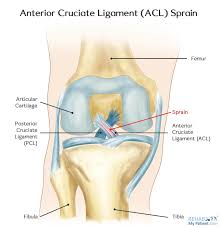
ACL SPRAIN
An ACL sprain is a tear to the anterior cruciate ligament in the knee which runs diagonally from the back of the femur (thigh bone) upwards and forwards to the front of the tibia (shin bone) and prevents the shin bone from moving excessively forward. It usually occurs as a result of either a twisting force being applied to the knee whilst the foot is firmly planted on the ground or twisting of the knee when landing from a jump. treatment- depends on severity
Learn More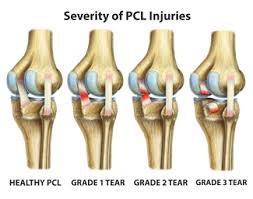
PCL sprain
The posterior cruciate ligament (PCL) is a ligament within the knee. Ligaments are tough bands of tissue that connect bones. The PCL -- similar to the anterior cruciate ligament (ACL) -- connects the thigh bone (femur) to your shin bone (tibia). Although it is larger and stronger than the ACL, the PCL can be torn. PCL injuries are often due to a blow to the knee while it's bent. Common causes include: Striking the knee against the dashboard during an auto accident Falling on the knee while it's bent Most people don't feel or hear a "popping" sensation in the knee after a PCL injury. This is more common with an injury to the ACL. treatment depends on the severity
Learn More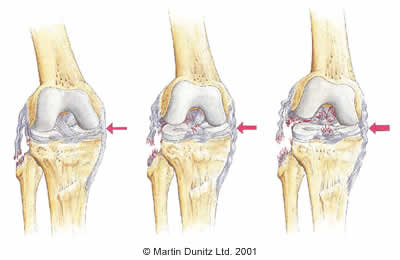
LCL sprain
The main cause of LCL injuries is direct-force trauma to the inside of the knee. This puts pressure on the outside of the knee and causes the LCL to stretch or tear. Symptoms of an LCL injury can be mild or severe, depending on the severity of the sprain or if it’s torn. If the ligament is mildly sprained, you may not have any symptoms at all. For a partial tear or complete tear of the ligament The treatment options for LCL injuries will depend on the severity of the injury
Learn More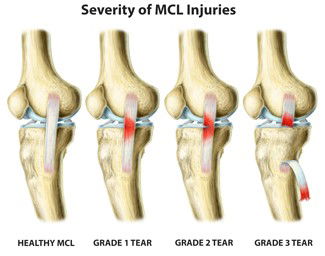
MCL sprain
it occus when knee is forced laterally swelling.bruising and discomfort are the symptoms treatment- rice to surgery depends.
Learn More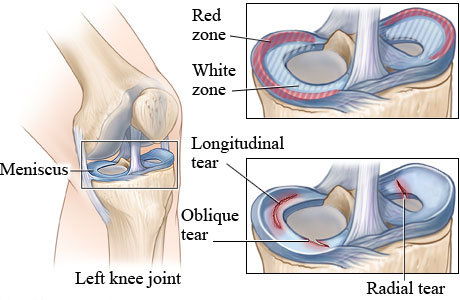
meniscus injuries
a meniscus tear can be painful and debilitating. Unfortunately, it's quite common. In fact, a meniscal tear is one of the most frequently occurring cartilage injuries of the knee.Meniscus tears are common in contact sports like football as well as noncontact sports requiring jumping and cutting such as volleyball and soccer. They can happen when a person changes direction suddenly while running, and often occur at the same time as other knee injuries, like an anterior cruciate ligament (ACL) injury. Meniscus tears are a special risk for older athletes since the meniscus weakens with age. More than 40% of people 65 or older have them. Treatment of a torn meniscus may include observation and physical therapy with muscle strengthening to stabilize the knee joint. When conservative measures are ineffective treatment may include surgery to repair or remove the damaged cartilage.
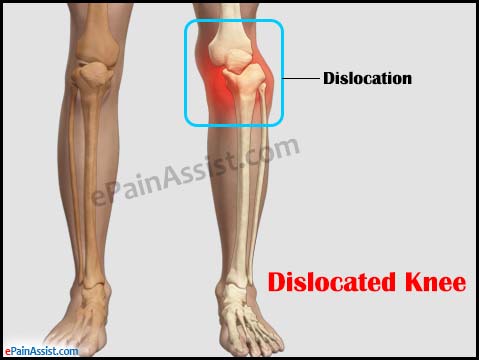
dislocation
A knee dislocation occurs when the bones that form the knee are out of place. A knee dislocation, more specifically, is when the bones of the leg (the tibia and fibula) are moved in relation to the bone in the thigh (femur).A knee dislocation occurs when the bones that form the knee are out of place. A knee dislocation, more specifically, is when the bones of the leg (the tibia and fibula) are moved in relation to the bone in the thigh (femur). Inappropriate or delayed treatment of a knee dislocation may result in loss of the leg.
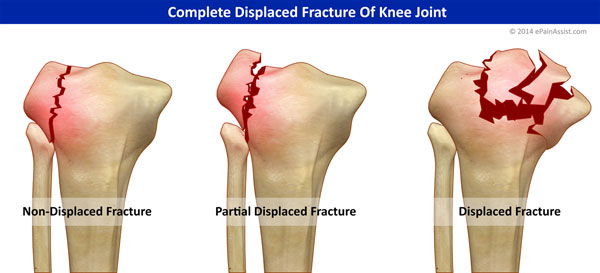
fractures
A kneecap fracture is a break or crack in the kneecap (patella). It may be just a small crack in the bone, or the bone may break into pieces or shatter. Some fractures may stick out through the skin. broken kneecap usually results from a fall onto your knee or a direct hit to the knee. Some kneecap fractures can happen when you are jumping or running. treatment- surgery



